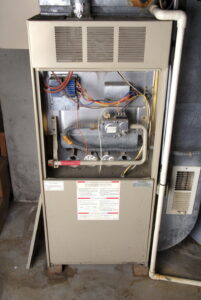Gas furnaces are popular in our area, and it makes sense! They’re effective at what they do, they’re efficient, gas is an affordable fuel source, and they work reliably. With some of the cold weather we’ve been hit with lately, it makes sense that homeowners are starting to do their research into these systems if they don’t have them already.
One thing that consistently turns customers off from investing in a gas furnace is the gas. People hear about carbon monoxide fatalities and it’s an understandable fear about having a gas-burning appliance in the home. Gas fires are a reality in our world when gas-burning appliances start to leak. But, when it comes to your furnace in Metairie, LA, as long as it’s maintained by a professional, you shouldn’t have to worry at all.
Here are some ways that your furnace has built-in safety measures that will keep your home from being in peril.
The Flame Sensor
First things first, many homeowners get nervous about their gas furnaces because they could potentially leak gas. But this is extremely rare for a variety of reasons.
The first reason is due to a chemical that’s added to natural gas called mercaptan, which is responsible for the “rotten egg” smell that comes from this gaseous material. This is artificially added to the gas because it makes it easier for you to detect when it’s leaking. If you’re walking around your furnace and you get a bad “rotten-egg” odor coming from the system, then you can be certain it’s leaking, and you can call for help.
The second reason that a furnace rarely leaks gas is due to a flame sensor. There’s a component in your gas furnace that senses when the gas starts to burn so that it can monitor the situation. If the furnace lets gas into the combustion chamber but the gas doesn’t burn, the flame sensor detects this and shuts off the access to the gas, stopping the system entirely and keeping your home safe.
The Heat Exchanger
Well, what about carbon monoxide? How does your system keep your home safe from CO? After all, CO-related injuries and deaths are more common than gas-related ones, due to the insidious invisibility of carbon monoxide.
Well, there are another two reasons why your furnace won’t release CO into your home.
The first is the heat exchanger, a component dedicated to keeping any combustion fumes like CO2, CO, and smoke, away from your breathable air. This piece is made out of thick metal so it lasts the entire duration of your furnace’s lifespan.
Don’t forget about your CO detectors! Carbon monoxide detectors can let out a loud screech when they pick up even a tiny amount of carbon monoxide, so you’re always protected.
Friction, Time, and Other Issues
Unfortunately, friction, time, and other problems that arise can cause these components to get damaged or become fail. That’s where routine maintenance and repairs come in. Be sure to coordinate with a trained professional from our team to have your system serviced so that you can go on with your life and be reliably kept safe.
Natal’s HVAC, Plumbing & Electrical has your back when you need furnace help. Contact us today. Service Honoring the Golden Rule!

